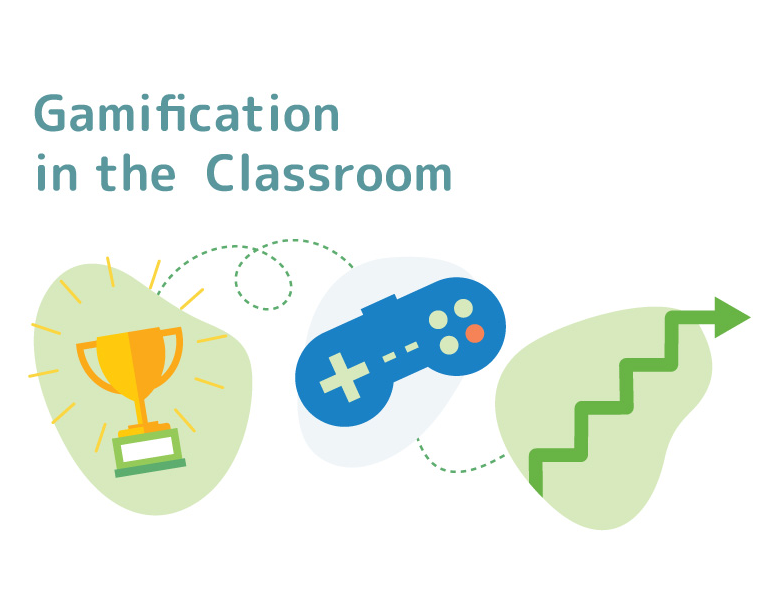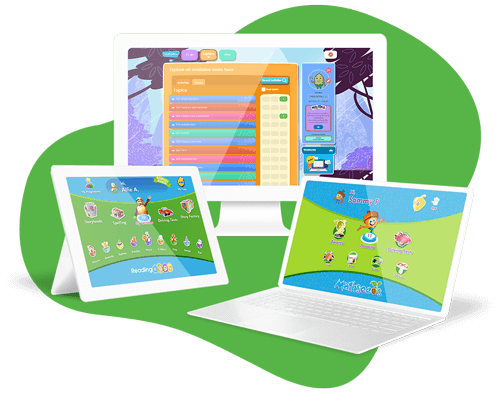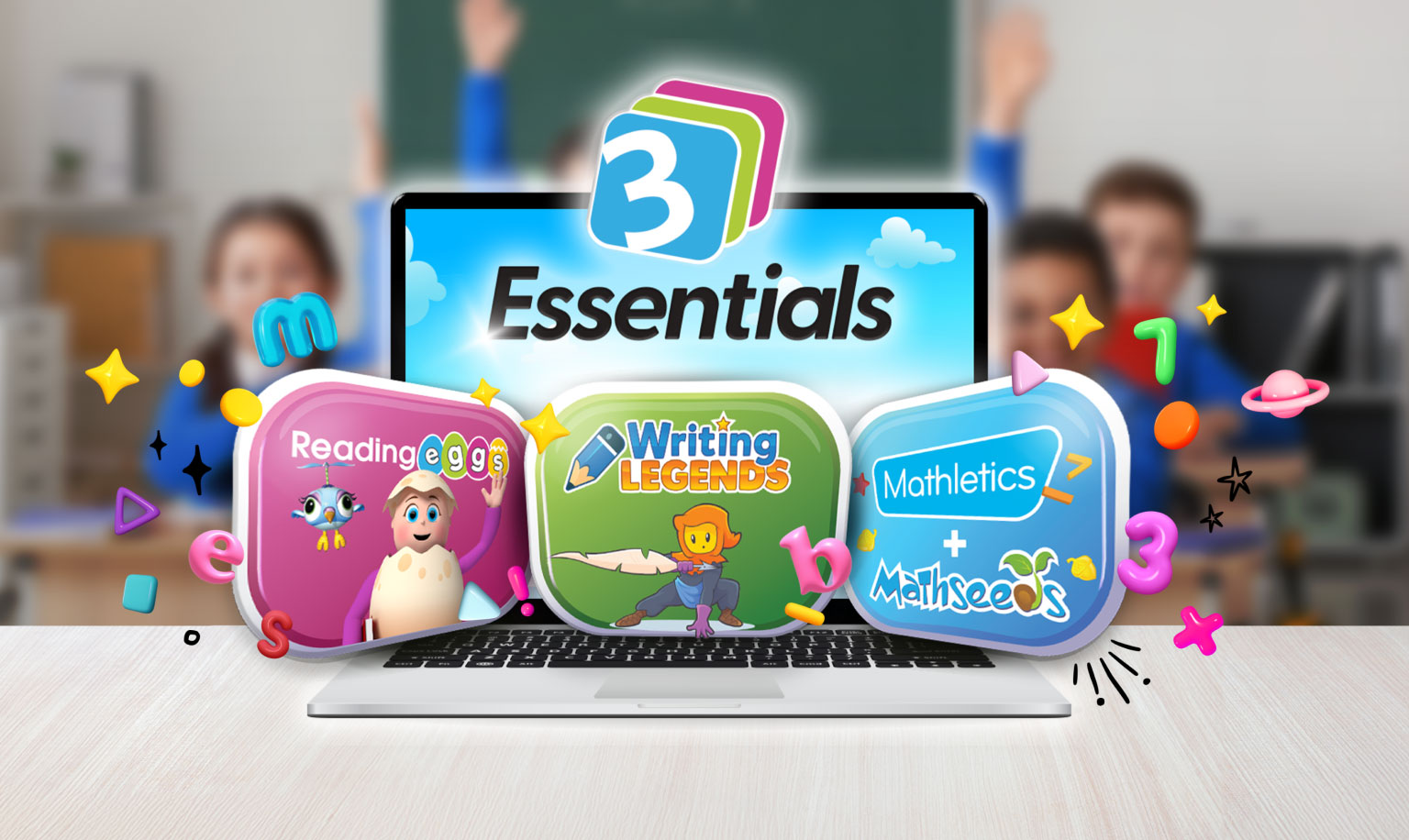
You don’t have to create an elaborate game from scratch to get the benefits of gamification in the classroom. Instead, you can gamify learning with just a few tweaks.
Here are 10 ways to gamify the learning in your classroom so students never want to stop playing!
In short
1. Choose a goal for the game
2. Encourage (friendly) competition
3. Give classic games an educational twist
4. Make progress visible
5. Level the learning
6. Keep score with points
7. Give mastery tokens
8. Make it a personal experience
9. Give rewards
10. Use gamified learning programs
1. Choose a goal for the game
All classroom gamification should have a purpose that supports learning. That’s why it’s important to choose a goal for the game. This might be a:
- general instructional goal, such as completing an activity or assignment
- specific learning goal, such as developing an understanding of a specific concept, showing progress or mastery
- behavioral goal, where the game is designed to promote positive behavior, engagement or attention.
Whatever goals you choose, make sure they’re clear to your students. They’ll lend the game a sense of purpose and ensure it’s a vital part of the learning journey.
2. Encourage (friendly) competition
Pitting students against each other will motivate students with a competitive streak, but there are less intimidating alternatives. Pitting students against each other will motivate students with a competitive streak, but there are some less- intimidating alternatives. For example:
Whiteboard races
Groups of three to four students compete to see who can put the most answers or ideas on the whiteboard. Students love an opportunity to use the board up the front of the room, and the group nature of the activity lessens the pressure felt by individuals.
Teacher vs student
This one is perfect for behavioral goals. Set a rule (eg everyone has to stop talking within three seconds of a call to attention) and award students a point every time they follow it. If they don’t — that’s a point for you. Make sure there’s a reward for the winner at the end!
Digital competitions
You can also use apps and programs for engaging student competitions, for example:
Live Mathletics (in Mathletics) allows students to test their mathematics skills against peers from the same class, country, or even the other side of the world. They might even be lucky enough to win a spot on the global leader board!
3. Give classic games an educational twist
There’s no need to reinvent the wheel when classic board and card games can easily be adapted for learning. Here’s a few suggestions:
Scrabble
This classic word game is great for developing vocabulary and spelling skills. Give students access to the dictionary while they play and they’ll progress even further.
Monopoly
A game of Monopoly will help your students develop their arithmetic and perhaps pick up some financial literacy in the process.
Tip: A single game can turn into a three-hour saga you might not have time for, so you can simplify it for classroom use. Search classroom versions of the game online and see what you can find.
Card games
Simple games like President or Go Fish are great for younger learners developing number sense, and you can also create your own with a regular deck. Students could arrange them to create number families, put them on top of each other to get fractions, or use them for a game of Bingo.
4. Make progress visible
Making progress visible drives motivation, because it shows learners exactly how far they’ve come and how far they’ve got to go. That’s why video games use progress bars and experience points that steadily build as players hone their skills.
You can easily transfer the same approach to your classroom. Help students set a quantitative goal (eg ‘I’m going to do 5 activities per week’) and use this to create a chart or list where students can tick off each step toward the goal as they complete it.
Related read: The Value of Games and Gamification with Mathematics
5. Level the learning
‘Leveling up’ is a motivator in any game, and one that can be applied to learning. Break a single learning goal into levels that learners must ‘pass’ before moving onto the next stage.
For example, if the goal is an understanding of two-digit addition, students might proceed through the following levels:
Level 1: Simple single-digit addition (eg 3 + 4)
Level 2: Two-digit addition without regrouping (eg 52 + 30)
Level 3: Two-digit addition with regrouping (eg 27 + 35)
Consider making the activities and resources for each level available all at once. That way learners can advance through them at their own pace.
6. Keep score with points
Scoring is another way of making progress visible, so create a points system. Make sure it’s transparent so all students can see how the scores are calculated. Students might earn points for:
- academic achievement (eg correct answers)
- goals met
- effort
- positive behaviour
Make sure the scores are visible too. An achievement board with gold stars is the classic approach, but students could track their scores on a personal chart if you want to avoid unhealthy competition.
7. Give mastery tokens
Give a badge or icon to students when they master a topic. A ‘Multiplication Master’ sticker can be proudly displayed on the front of their workbook, and it’s much more connected to the learning goal than a generic A, B or C.
This could also work in tandem with your learning levels. A topic could have different levels of mastery signified by different colors or images. Get your students to help you with the design!
8. Make it a personal experience for students
Just as video games let players choose a character, you can give your students a sense of ownership over the learning game by:
- setting their own targets or goals for success
- creating their own progress tracking system (depending on their age this could be anything from a sheet that gets weekly stickers to an Excel spreadsheet)
- creating and decorating a personalized avatar in a gamified program such as Mathletics or Reading Eggs.
9. Give rewards
Reward systems are a major motivational factor in the gamification of learning. A reward could be anything from a name at the top of a leader board, a merit award or a virtual certificate in a gamified learning program.
You can use tangible rewards too — like a class shop where they can redeem their points —class shop – but don’t let these become the primary motivation for learning. The end goal is for students to become intrinsically motivated. Encourage students to celebrate and share their achievements beyond simply receiving the rewards.
Remember: Rewards don’t have to be reserved for those who win. Reward students who have set new personal bests, demonstrated an impressive level of effort or worked well with peers while playing the game.
10. Use gamified learning programs
If gamifying the classroom takes time and resources you don’t have, trial a gamified learning program that does it for you. Besides making your life easier, you’ll also be giving your students the benefit of features like:
- progress trackers that update in real time
- personal avatars
- in-game rewards that can be purchased with points
- multiple games set in engaging virtual worlds
- levels that students automatically advance through at their own pace
Need more help with gamification?
Explore our range of gamified learning programs for mathematics, literacy, and science.












